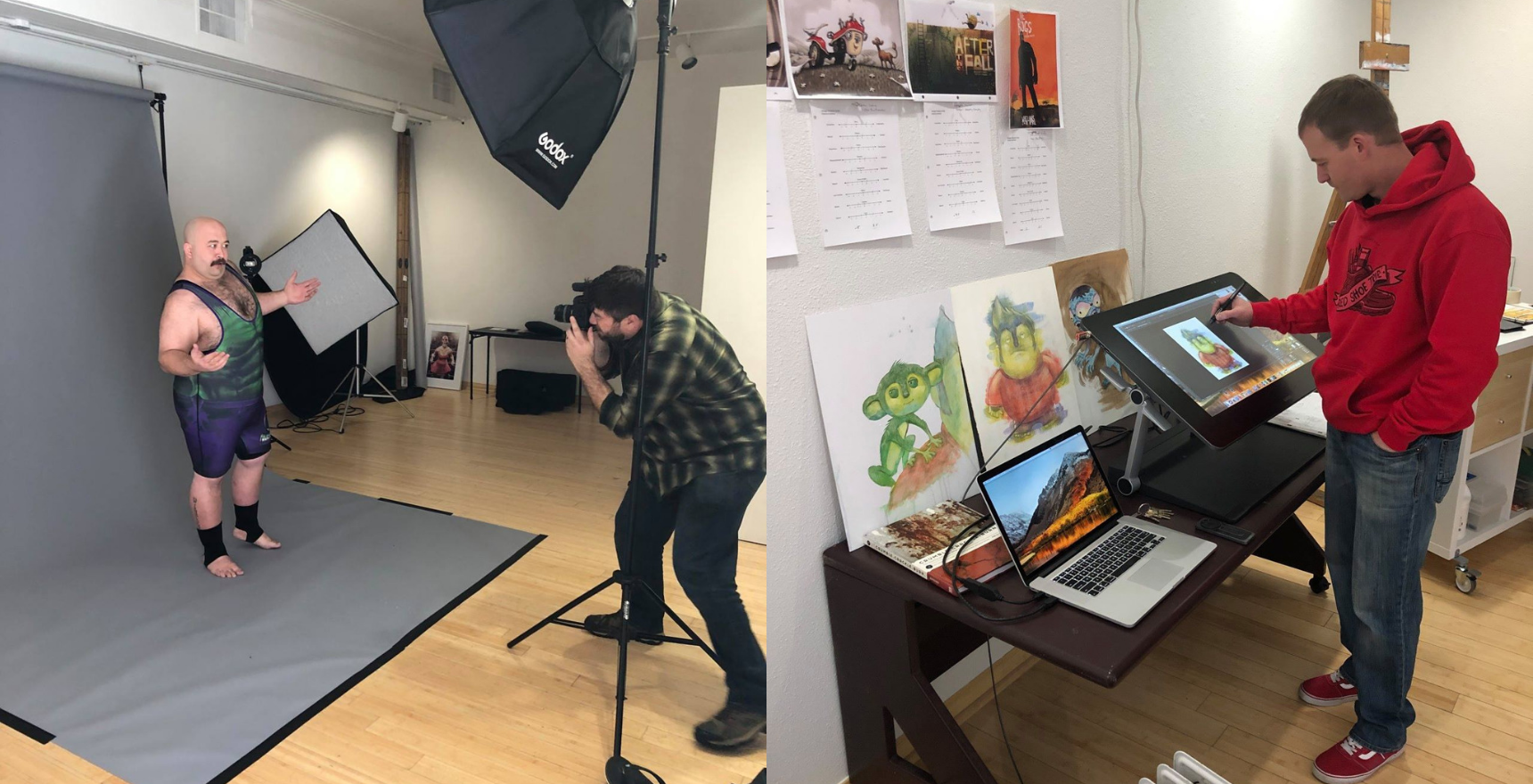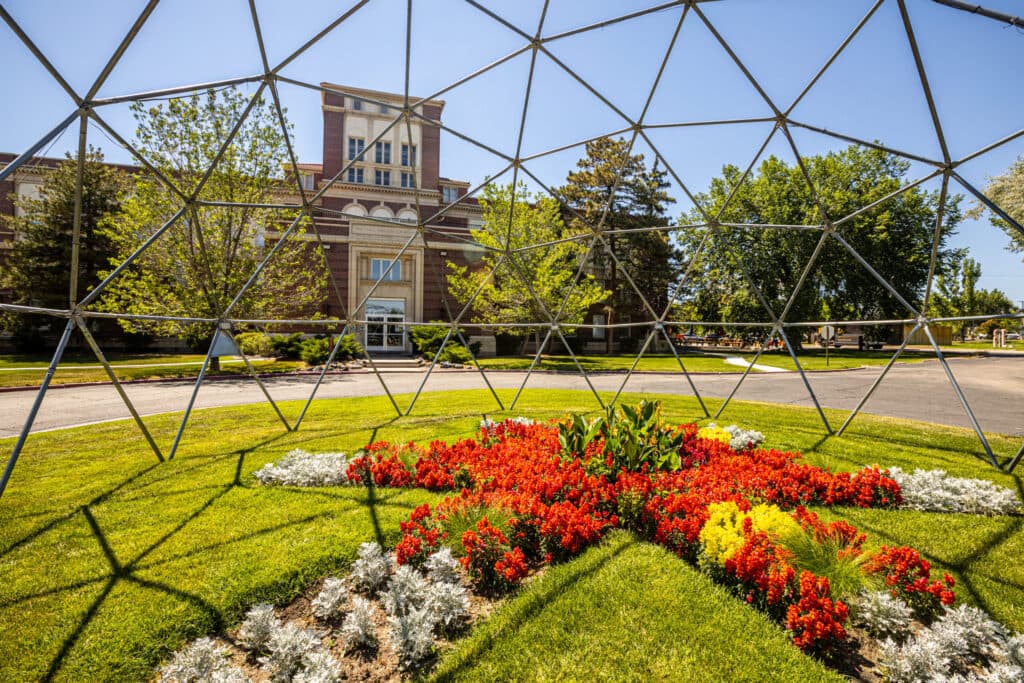During the month of January, Philip J. Steele Gallery became a working studio space for four RMCAD faculty members. From January 17 – 31, James Reiman, Scott Wakefield, Jessica Elliott, and Bruce Mackh became a part of the gallery as they worked on personal projects, allowing visitors to observe their process up close and personal.
Now, patrons can see the final result of their work from February 7 – 15. Ahead of the “closing reception” on February 7, Reiman, Wakefield, Elliott, and Mackh shared some insight to their experiences as part of RMCAD’s Living Gallery.
James Reiman, Chair of Graphic Design
What he has been working on: Portraits of local independent professional wrestlers.
His inspiration for the exhibition: “A lot of my work connects to my lifelong interest in alter-egos, heroes, and villains. I enjoy photographing people that transform themselves into something else—often living double lives—and I love talking with them about their motives for doing so.”
What he has learned: “Being relatively new to the Denver area, I did not have any connections at the beginning of this project. I immediately started reaching out to wrestlers and promoters via Instagram and Facebook. One contact led to the next, and by the end of almost three weeks of studio time, I had photographed thirteen wrestlers in the gallery. In my mind, this was an exploratory exercise that I think could develop into something larger as I continue to work with the community.”
Scott Wakeman, Chair of Illustration
What he has been working on: “I am experimenting with new ways of making art for the Children’s Picture book market (ages 3-6). While in the gallery, I have been analyzing the work of contemporary illustrators, sketching new characters, and experimenting with various media, including acrylic glazing, pastel, mono prints in oil, digital painting, and acrylic transfers.”
His inspiration for the exhibition: Through his experimentation with style and medium, Wakeman is hoping to open new doors for his work in children’s books. His display will include several new character designs, each created with a different process or medium.
What he has learned: “I’ve learned how to analyze the visual elements of an image that create what we often call ‘style.’ I discovered that many of the contemporary illustrators I admire are doing work that is more stylized than realistic. Their work is grounded in realism, but not restricted by it, and this gives them the opportunity to tell imaginative stories.”
Jessica Elliott, Chair of Graphic Design
What she has been working on: Finding new and creative ways to showcase interior design work she’s completed during her career.
Her inspiration for the exhibition: Elliott worked closely with Gallery Director Rick Dailey to brainstorm creative ways to show her designs in the gallery space. Her display will include 3D vinyl cut-outs, projected imagery, and framed pieces to highlight her work in commercial design.
What she has learned: “I’ve learned that you can be creative in showing your work, and that it is [important] to have the ability to showcase your portfolio in a variety of ways.”
Bruce Mackh, Chair of Liberal Arts
What he has been working on: An installation that visually showcases “the liveliness of my workplace, surroundings, and the tangible results of my research and professional activity.”
His inspiration for the exhibition: “It was vital for me to portray my research as a journey and process, not just the results.” Mackh’s display will include a visualization of the 240 (yes, 240) books he’s read over the past 24 months, what he’s in the progress of researching, and communications between him and his editor.
What he has learned: “More often than not, gallery exhibitions represent the finished product. Regardless of the medium—whether Graphic Design, Illustration, Interior Design, research conducted for publication, or other output—our work is like an iceberg. We only see the magnificent 10 percent that breaks the surface and shines in the light, while 90 percent remains unseen beneath the water. This exhibition not only gives viewers a glimpse of the results of our work; it also reveals the intensive labor that causes our artifacts to be made manifest.”
Learn more about the Living Gallery Exhibition. 
